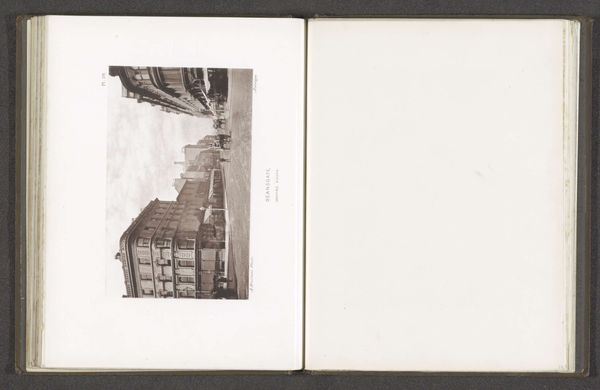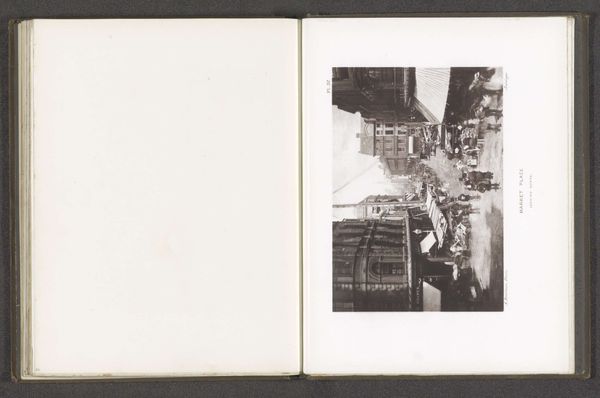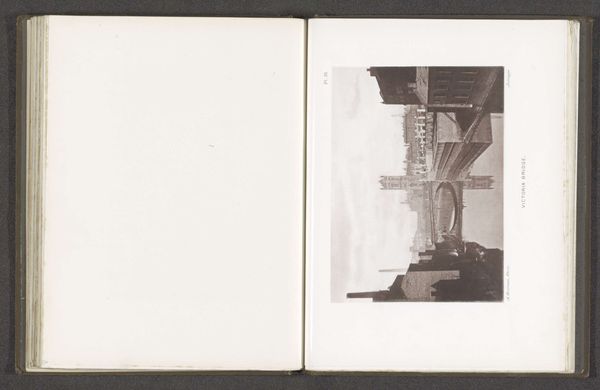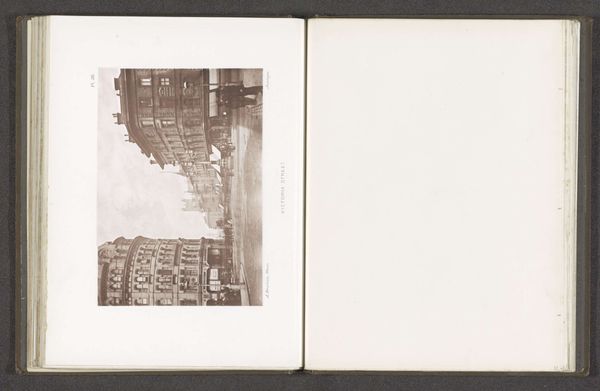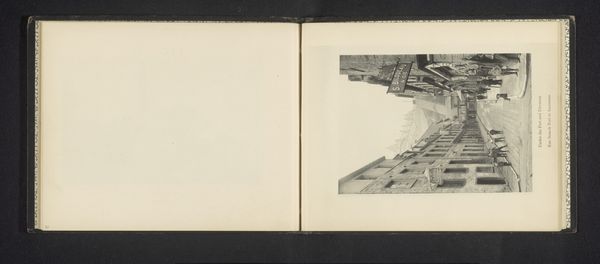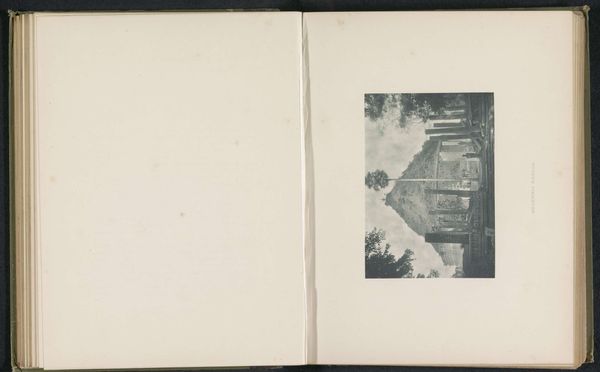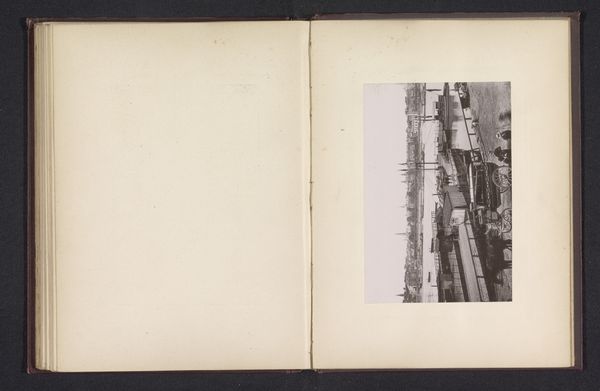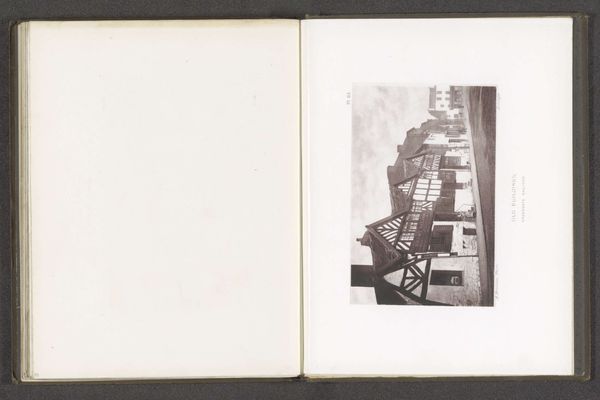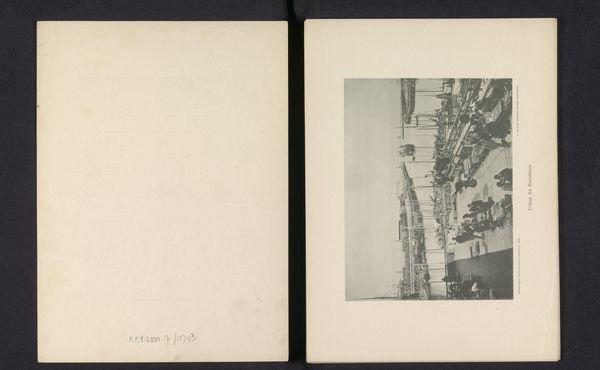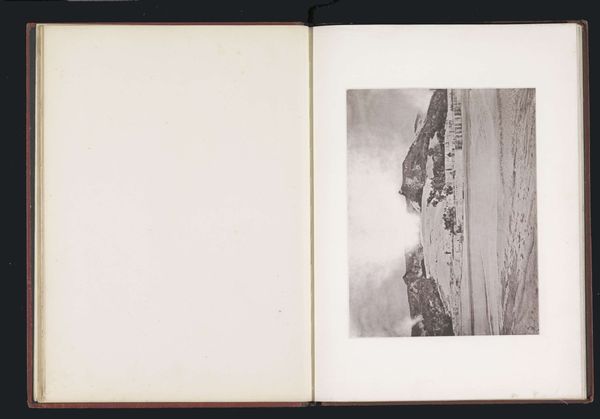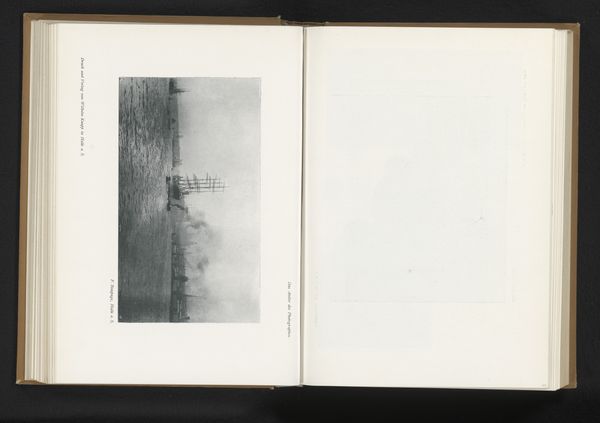
Dimensions: height 129 mm, width 189 mm
Copyright: Rijks Museum: Open Domain
Curator: This is "Gezicht op Peter Street in Manchester" or "View of Peter Street in Manchester", taken by Alfred Brothers before 1878, a gelatin-silver print that beautifully captures the essence of its time. Editor: My first impression is a sense of hazy anonymity. The street recedes into a vanishing point obscured by the light and what I presume to be coal smoke. It is as if the photograph is attempting to erase its subject even as it attempts to document it. Curator: Precisely. Brothers worked at a time when photography was seen as a scientific tool as well as an art form. The hazy effect and soft focus lend a pictorial quality. Brothers seems to have been aiming at transforming mundane reality through technique. Editor: Considering the Industrial Revolution and the context of burgeoning urban centers in England, photography served the need for representing societal transformations in industrial centers like Manchester. This almost looks like an indictment rather than an affirmation of modernity. Curator: Indeed. Note how the orthogonal lines of the street and buildings, in concert with the tonal range from deep shadow to near-white, guide the eye and underscore the imposing scale of the architecture, while dwarfing the human element. It almost feels like a visual equivalent of the social alienation described by Marx. Editor: I wonder if this photo and others from this period prompted discussion about civic priorities and urban reform? Who owned the street, literally and figuratively? Was there debate regarding urban development? These pictures can represent and affect the public’s views regarding modernity and change. Curator: Interesting points about the photographic act and its social purpose, its potential role in political debate. As an object, a composition, and a testament to photographic technique, the success here, for me, lies in its capacity to reveal underlying, complex relationships. It serves to underscore, albeit somewhat bleakly, that relationship between humanity, technological advance and nature. Editor: Agreed. Its historical import goes far beyond that which its composition provides us, it invites the spectator to reflect and think about its influence in history and even contemporaneity. It prompts questions and I would want the museum visitor to reflect on them.
Comments
No comments
Be the first to comment and join the conversation on the ultimate creative platform.
